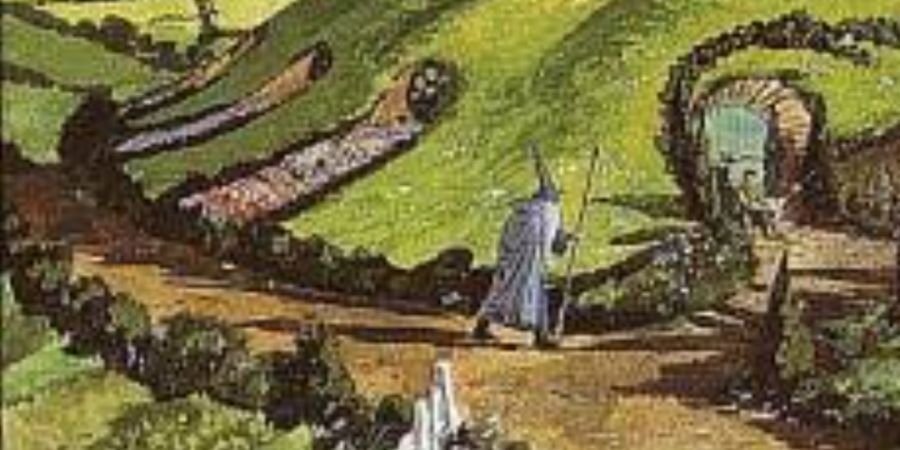

"The Hobbit" by J.R.R. Tolkien is a classic and beloved tale that has captivated readers for generations. The book follows the journey of Bilbo Baggins, a hobbit who is persuaded by the wizard Gandalf to join a company of dwarves on a quest to reclaim their treasure from the dragon Smaug.
At the beginning of the book, Bilbo is a contented hobbit who enjoys a simple and comfortable life. He is not interested in adventure, and the idea of leaving his home and venturing into the unknown is terrifying to him. However, as he joins the company of dwarves on their journey, he slowly begins to discover the thrill of adventure and the bravery that lies within him.
Tolkien's world-building in "The Hobbit" is masterful. He creates a vivid and detailed world, complete with intricate maps and languages, that draws readers in and allows them to immerse themselves in the story. From the lush forests of Mirkwood to the Lonely Mountain where Smaug dwells, Tolkien's descriptions are rich and vivid, painting a picture of a fantastical world that is both beautiful and dangerous.
The characters in "The Hobbit" are also memorable and well-developed. Bilbo Baggins is a relatable and endearing protagonist, and readers can't help but root for him as he navigates his way through the challenges of his journey. The dwarves are a lively and diverse group, each with their own distinct personalities and quirks. The wizard Gandalf is wise and enigmatic, and serves as a mentor and guide to Bilbo and the dwarves.
One of the most memorable characters in the book is the dragon Smaug. Tolkien's portrayal of the dragon is both terrifying and awe-inspiring. Smaug is cunning and intelligent, and his conversations with Bilbo are some of the most memorable scenes in the book. His hoard of treasure is described in great detail, making readers understand why the dwarves are so desperate to reclaim it.
Tolkien's writing style in "The Hobbit" is also noteworthy. His prose is elegant and poetic, and he uses vivid imagery to bring his world to life. His use of song and poetry adds to the sense of immersion, and the songs and rhymes in the book are both entertaining and informative.
Another aspect of "The Hobbit" that is notable is its themes. At its core, the book is about the power of friendship, courage, and perseverance. Bilbo, the dwarves, and Gandalf all rely on each other to overcome the challenges they face, and their loyalty and bravery in the face of danger is inspiring. The book also touches on the theme of greed and the corrupting influence of power, as seen in the character of Smaug and the dwarves' desire to reclaim their treasure.
Overall, "The Hobbit" is a timeless classic that has stood the test of time. Its themes and characters continue to resonate with readers of all ages, and its vivid world-building and poetic prose are still just as captivating as they were when the book was first published. It is a book that can be enjoyed by both children and adults, and its enduring popularity is a testament to Tolkien's skill as a storyteller.
In conclusion, "The Hobbit" is a must-read for anyone who loves fantasy and adventure. Tolkien's world-building, character development, and prose are all masterful, and the themes of friendship, courage, and perseverance are timeless. The book has inspired countless readers and writers, and its impact on the genre of fantasy literature cannot be overstated.
